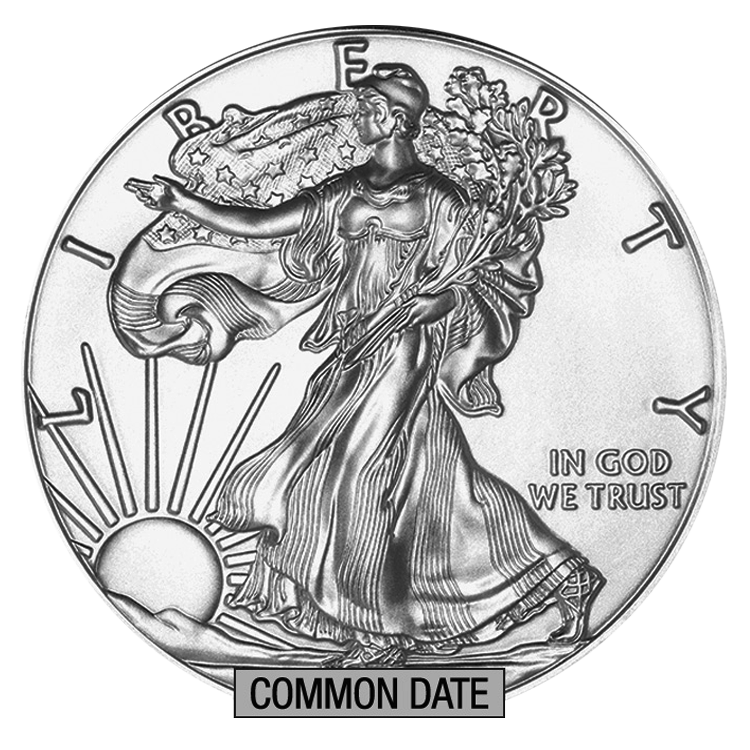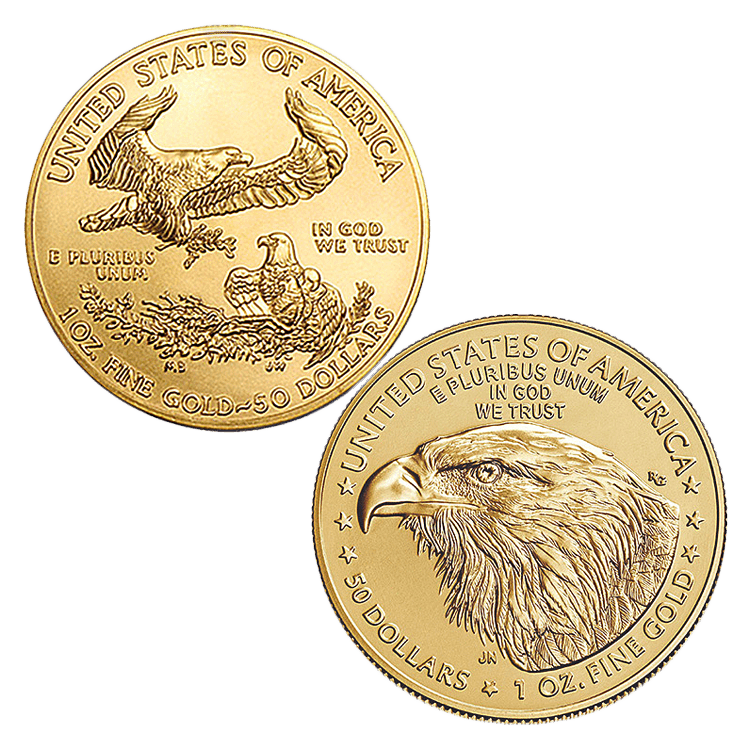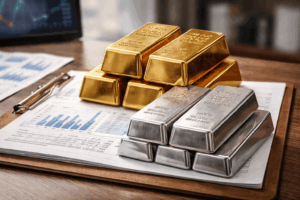
When you’re investing in precious metals, it’s not just about price performance — it’s about liquidity. Liquidity determines how quickly and easily you can convert your assets into cash without taking a hit on value. For investors seeking both security and flexibility, understanding the differences between gold and silver liquidity is essential.
Understanding Precious Metals Liquidity
Gold has long been considered the ultimate monetary asset. Its universal recognition, deep markets, and relatively low volatility make it easy to buy or sell virtually anywhere in the world. This gives gold superior liquidity and positions it as the cornerstone of wealth preservation strategies.
While gold sets the standard for liquidity, silver, on the other hand, plays a dual role as both a monetary and industrial metal. Its smaller market size, wider price swings, and greater premium fluctuations make silver liquidity more complex. While silver can offer higher upside potential, investors must accept that selling silver can sometimes be more challenging than selling gold — especially in volatile markets.
Gold vs. Silver: Key Liquidity Differences
Gold’s Liquidity Strengths
- Globally recognized and accepted
- 24/7 active markets with high trading volume
- Narrow bid-ask spreads (the difference between buying and selling prices) on standard bullion coins and bars
Silver’s Liquidity Trade-Offs
- Smaller market depth than gold
- Higher volatility, making timing more important
- Premium spikes during crises (as seen in 2020)
The 2020 pandemic illustrated this liquidity divide perfectly. While silver’s 47.9% gain dramatically outpaced gold’s 25.1%, this performance came with a catch: silver premiums skyrocketed and supply chains struggled, making it harder for investors to actually realize those gains through timely sales.
During market stress, gold might sell within 2% of spot price, while silver spreads can widen to 10% or more.
Market Demand, Storage, and Accessibility
Because silver is far less valuable per ounce, storing significant amounts requires far more space and higher costs compared to gold. For investors making larger allocations, gold is far easier to transport, store, and liquidate efficiently.
Silver’s strong industrial demand — from solar panels to electronics — can enhance liquidity during periods of economic expansion. But in downturns, that same industrial link can weigh on prices and complicate liquidation.
Liquidity Strategies by Investor Type:
Emergency Fund Investors
- Priority: Government-minted gold coins
- Consider: Fractional sizes for maximum flexibility
Balanced Portfolio Seekers
- Strategy: Mix of gold (70-80%) and silver (20-30%)
- Benefit: Stability with growth potential
Growth-Focused Investors
- Approach: Higher silver allocation
- Caution: Maintain gold anchor for liquidity needs
According to Morgan Stanley, “Gold typically offers better liquidity than silver due to its larger market size, lower volatility, and broader global acceptance among dealers and institutions.”
Selling Strategies and Exit Planning
A smart investor doesn’t just buy metals — they plan how to sell them. Maintaining relationships with multiple reputable dealers, monitoring premiums, and understanding bid-ask spreads can all ensure smoother exits when the time comes. Building your exit strategy as you enter a position is the best way to ensure liquidity is there when you need it.
Gold Silver Liquidity in Practice
Real-world experience shows that liquidity differences between these metals matter most during market stress. Investors who understand these nuances position themselves to act decisively when opportunities, or emergencies, arise.
The Balance Between Flexibility and Growth
Smart precious metals investing isn’t about choosing between gold or silver — it’s about understanding how each metal’s liquidity profile serves your specific needs.
Start by defining your liquidity timeline: immediate access calls for gold’s reliability, while longer horizons can accommodate silver’s volatility. By matching your metal mix to your liquidity needs, you’ll build a portfolio that’s both secure and strategically flexible.
Your Questions on Liquidity Answered
What does gold silver liquidity mean for investors?
Gold silver liquidity refers to how easily these metals can be converted into cash without losing value. Gold is recognized globally, with deep markets and narrow bid-ask spreads, making it highly liquid. Silver is also widely traded, but its smaller market size and industrial demand can create more volatility, making it less liquid than gold in many situations.
Is gold more liquid than silver?
Yes, gold is generally more liquid than silver. It’s easier to buy and sell worldwide, storage costs are lower relative to value, and prices are more stable. Silver can be harder to liquidate quickly, especially in times of crisis when premiums spike and dealer supply becomes constrained.
Why is silver liquidity more complicated than gold?
Silver liquidity is more complex because the silver market is smaller and more volatile. Industrial demand adds another layer, as economic cycles can push silver prices higher or lower quickly. Plus, silver takes up more storage space per dollar invested, which can impact practical liquidity.
How do storage costs affect gold and silver liquidity?
Storage costs impact liquidity because they determine how practical it is to hold large amounts of metal. Silver’s low price per ounce means investors need to store far more physical volume, which raises costs and complicates sales. Gold’s high value density makes it easier to store and sell efficiently, enhancing its liquidity advantage.
Which precious metal is more liquid during times of crisis?
During times of crisis, most investors turn to gold first because it offers superior liquidity. Gold coins from major mints are recognized worldwide, easy to store, and quick to convert into cash. Silver can also be sold, but larger storage volumes and wider price swings can make it slower or less efficient to liquidate under pressure.
Get Gold & Silver Insights Direct to Your Inbox
Join thousands of smart investors who receive expert analysis, market updates, and exclusive deals every week.













